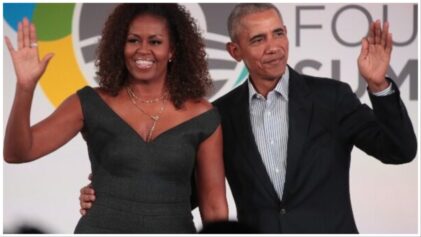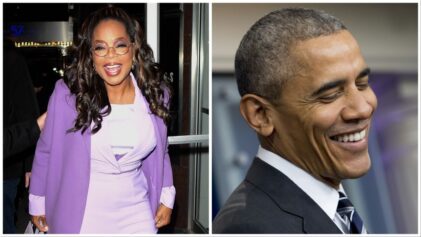As the ongoing post-election analysis begins to emerge, it’s becoming apparent that something remarkable happened last month in the presidential election: For the first time in history, blacks appear to have voted at a higher rate than whites, according to a Pew Research Center analysis.
While the conclusion still isn’t final because post-election analysis is ongoing, it seems likely that all the Republican efforts to suppress black voter turnout had the opposite effect, motivating blacks to flock to the polls at such a high rate that they actually surpassed their portion of the electorate.
Blacks made up 12 percent of the electorate this year but accounted for 13 percent of all votes cast. While this “over-performance” was a repeat of what happened with the black vote in 2008, this year early analyses seems to indicate that the black turnout rate exceeded the white turnout rate for the first time ever.
This is likely why all the polls that predicted an extremely tight race were so wrong, as Obama wound up beating Romney by 4 percentage points, 51 percent to 47 percent, while most pre-election polls showed the margin would be under 2 percent. When pollsters are estimating their margins between the candidates, they have to use formulations that predict what proportions of the electoral groups will show up. Because blacks have customarily underperformed as a percentage of their population, pollsters pegged the black turnout to be much lower than it turned out to be.
While analysts pointed to the candidacy of the nation’s first black president as a big reason for this year’s turnout, there is also something else going on—a steady decline in white turnout that’s been seen over the past two elections. The white share of the electorate has been steadily falling for decades as the numbers rise for groups like Latinos and Asians, but now there appears to be a lack of voting enthusiasm among whites, particularly younger whites. In 2008, blacks aged 18 to 29 voted at a rate of 58 percent, compared to 52 percent for whites of the same age.
“A difference that was almost certainly related to the historic nature of the Obama candidacy, but that might foreshadow patterns in political engagement among the Millennial generation that could persist throughout adulthood,” said the Pew analysis.
While more Latinos and Asians voted in this past election than ever before, their share of total votes cast was still lower than their share of the eligible voters— Latinos were 10 percent of the votes cast while they are 11 percent of the eligible voters; Asians were 3 percent of votes cast while they are 4 percent of eligible voters.
According to the Pew Center analysis, the overall number of votes cast actually fell in 2012 compared to 2008—129 million votes cast this year, compared to 131 million in 2008. Since the eligible population grew by 9 million due to population growth, that means the turnout rate among eligible voters fell by more than 3 percentage points, from 63 percent in 2008 to about 60 percent in 2012.
In 2008, according to the post-election census survey, the gap between white and black turnout was the smallest on record, with 66.1 percent of all age and citizen eligible whites voting, compared with 65.2 percent of blacks, 49.9 percent of Hispanics and 47 percent of Asian Americans. The survey results showed that the white turnout rate had declined by 1.1 percentage points between 2004 and 2008, while the rates for the other groups all rose—by 4.9 percentage points among blacks, 2.7 among Hispanics and 2.4 among Asians.
But the changing nature of the American electorate was profoundly illustrated by this fact: Mitt Romney won 59 percent of the white vote last month and lost to Obama by 4.7 million votes and an electoral college margin of 332-206. When George H.W. Bush won the same percentage of the white vote in 1988, he beat Michael Dukakis by 7 million votes and an electoral college landslide of 426-111.
“The stark difference in those two outcomes is a reflection of the country’s rapidly changing demographic makeup, driven mainly by the population growth among Hispanic and Asian American immigrants and their children,” Pew said. “Blacks, by contrast, have not seen their share of the population grow during this period. But their electoral clout has increased because their participation rates have risen steadily in the three presidential elections from 2000 to 2008.”


